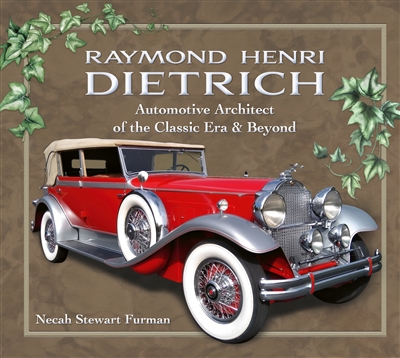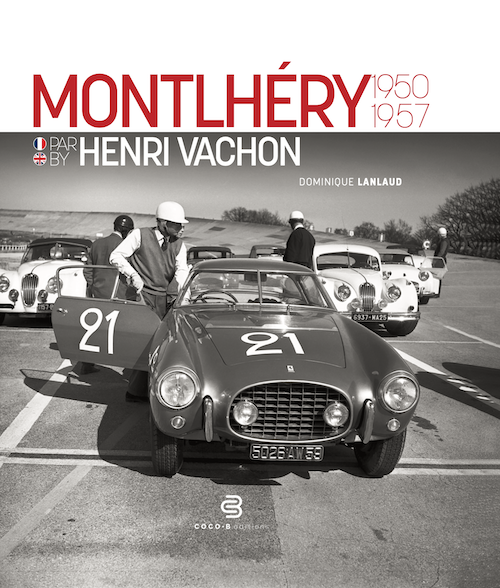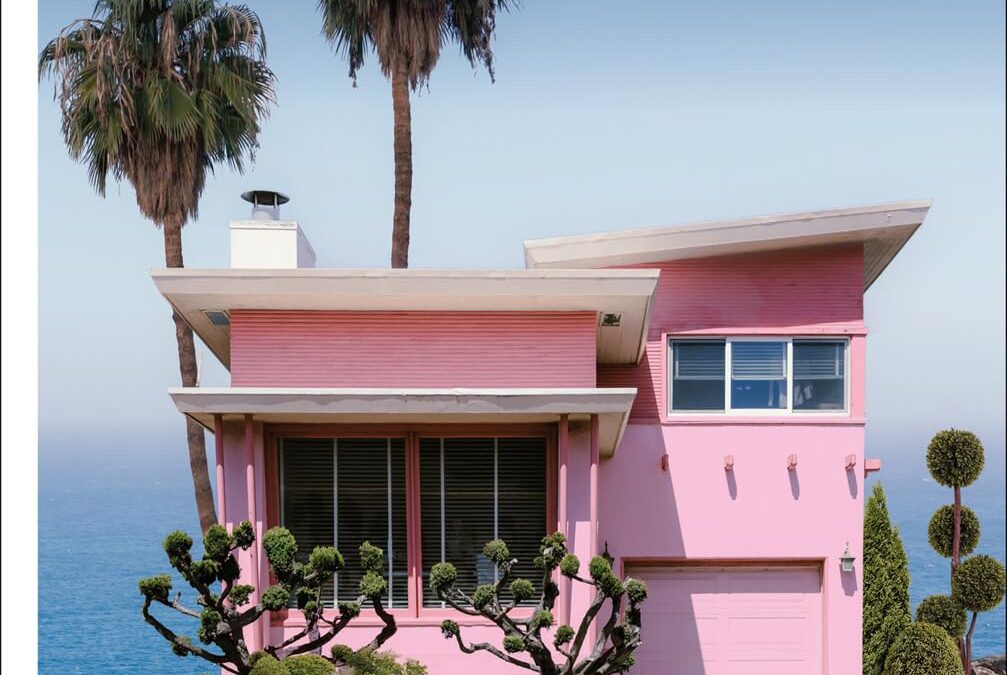
AVAILABLE FEBRUARY 2024
• The successor to the bestselling Carchitecture (6,000 copies sold)
• America’s most iconic architecture meets dazzling supercars and classics
• Top-notch photography, sleekly designed
“Design writers Thijs Demeulemeester and Bert Voet’s book Carchitecture explores the historical parallels between trends in architectural styles and car design.” – Financial Times A book like a road trip along iconic American homes and the unique cars that perfectly match them. Carchitecture goes America. Through four chapters – Iconic Houses, Cars & Stars, Californication and American Cars – and five essays, the reader discovers the wonderful interplay of architecture and car design. Eye candy for architecture and car lovers alike.
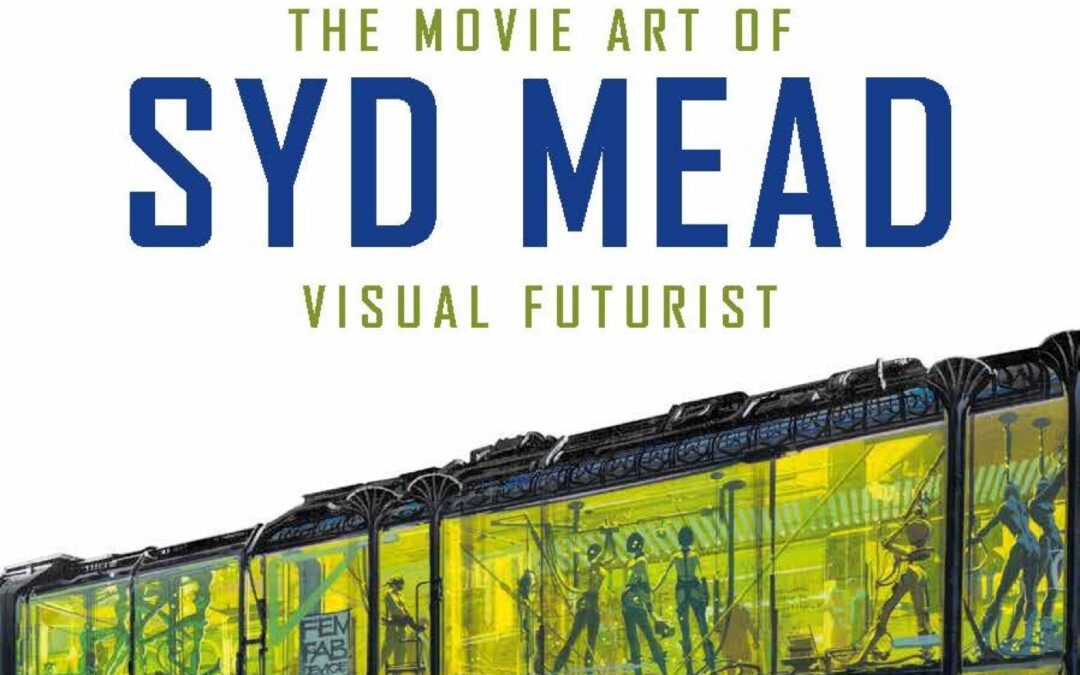
Syd Mead is one of the most accomplished and widely respected artists and industrial designers alive today. His career boasts an incredible array of projects from designing cars to drafting architectural renderings, but he is most famous for his work as a concept artist on some of the most visually arresting films in the history of cinema. Since working on
Star Trek: The Motion Picture in 1978 as a production illustrator Syd Mead has always aimed to render “reality ahead of schedule,” creating evocative designs that marry believable content with a neofuturistic form. It is this ability to predict technological potential that has helped Mead create such a distinctive and influential aesthetic. From his work with Ridley Scott on
Blade Runner, to his striking designs for the light cycles in
Tron, to his imposing concept art for the U.S.S. Sulaco in James Cameron’s
Aliens, Syd Mead has played a pivotal role in shaping cinema’s vision of the future.
The Movie Art of Syd Mead: Visual Futurist represents the most extensive collection of Mead’s visionary work ever printed, compiling hundreds of images, sketches and concept arts from a career spanning almost 40 years, many of which have never been seen in print before. Each entry provides a unique insight into the processes involved in Mead’s practice as well as illuminating the behind-the-scenes work involved in creating a fully realized, cinematic depiction of the future. With such a plethora of images from the many genre-defining films Mead has worked on, this is essential reading for film fans, artists and futurologists alike.

Lifestyle journalist Thijs Demeulemeester takes you on a trip through some iconic houses and the unique cars that match them in elegance of design and construction.
“Life is too short to drive boring cars.” – Hanan Sobati, founder of Arabian Gazelles, the first female supercar club in the world.
“I only purchase and drive cars that represent thoughtful design, elegance and performance.” – Frank Lloyd Wright
This book about beautifully designed cars and international architecture has been curated with an eye for pure aesthetics. Although architecture and cars are theoretically miles apart, the sources of inspiration for their designers are often strikingly similar. Recalling a time when you could recognize an architect from his Saab or his Citroën DS, lifestyle journalist Thijs Demeulemeester shows that architects and luxury car makers are alike in their appreciation of elegance of design, attention to materials, and solid construction. This book takes you on a trip through some iconic houses and the unique cars that match them.

West Coast Wild
California s architectural anomalies
At the dawn of the automobile age, Americans predilection for wanderlust prompted a new wave of inventive entrepreneurs to cater to this new mode of transportation. Starting in the 1920s, attention-grabbing buildings began to appear that would draw in passing drivers for snacks, provisions, souvenirs, or a quick meal. The architectural establishment of the day dismissed these roadside buildings as monstrosities .
Yet, they flourished, especially along America s Sunbelt, and in particular, in Southern California, as proprietors indulged their creative impulses in the form of giant, eccentric constructions from owls, dolls, pigs, and ships, to coffee pots and fruit. Their symbolic intent was guileless, yet they were marginalized by history. But, over the past 40 years, California’s architectural anomalies have regained their integrity, and are now being celebrated in this freshly revised compendium of buildings, California Crazy.
Brimming with the best examples of this architectural genre, California Crazy includes essays exploring the influences that fostered the nascent architectural movement, as well as identifying the unconventional landscapes and attitudes found on Los Angeles and Hollywood roadsides which allowed these buildings to flourish in profusion.
In addition, California Crazy features David Gebhard’s definitive essay, which defined this vernacular movement almost forty years ago. The California Crazy concept is expanded to include domestic architecture, eccentric signage, and the automobile as a fanciful object.

Three quarters of a million people are in a plane somewhere right now. Many millions travel by air each day. For most of us, the experience of being in an airport is to be endured rather than appreciated, with little thought for the quality of the architecture. No matter how hard even the world’s best architects have tried, it is difficult to make a beautiful airport.
And yet such places do exist. Cathedrals of the jet age that offer something of the transcendence of flight even in an era of mass travel and budget fares. Here are twenty-one of the most beautiful airports in the world.
The book features:
Wellington International Airport, ‘The Rock’ shaped like the dangerous cliffs of a local legend
Kansai International Airport, Renzo Piano’s gigantic project built on three mountains of landfill
Shenzhen International Airport, a manta ray shaped terminal putting this booming region on the map
Daocheng Yading Airport, the world’s highest civilian airport in the middle of the Tibetan mountains
Chhatrapati Shijavi International Airport, rising from the slums of Mumbai like a Mogul palace
Queen Tamar Airport, a playfully iconic modern airport nestled in the mountains of Georgia
King Abdulaziz International Airport, the gateway to Mecca resembling a Bedouin city of tents
Pulkovo Airport, mirroring the city of St Petersburg with bridges, squares and art
Berlin-Tegel Airport, ultramodernity, 1970s style
Copenhagen Airport, an icon from the golden age of air travel
Franz Josef Strauß Airport, sober and easy to negotiate, Munich’s model airport
Paris Charles du Gaulle Airport, the brutalist icon that launched the career of airport architect Paul Andreu
London Stansted Airport, Norman Foster’s return to the golden age of air travel
Lleida-Alguaire Airport, a relic of Catalonia’s early 21st century building boom
Madrid-Barajas Airport, Richard Rogers and Antonio Lamela’s calm, bamboo-panelled Terminal 4
Marrakesh Ménara Airport, a blend of 21st century construction and traditional Morrocan design
Santos Dumont Airport, Rio de Janeiro’s modernist masterpiece
Carrasco International Airport, Rafael Viñoly’s design inspired by the sand dunes of his native Uruguay
Malvinas Argentinas International Airport, echoing the mountains and glaciers of Tierra del Fuego
John F Kennedy International Airport, Eero Saarinen’s glamorous jet-age TWA terminal
Spaceport America, a vision of the future in the New Mexico desert
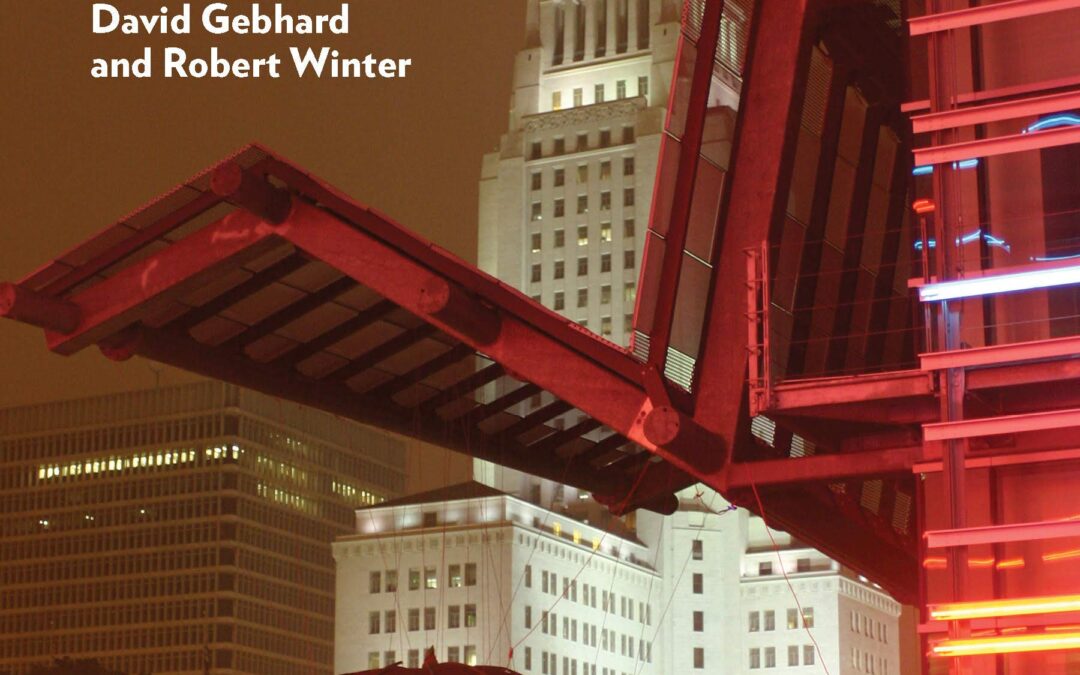
The map may not be the territory, and the word may not be the thing, but this guide is as close as it gets.
Since its first publication by the Los Angeles County Museum of Art in 1965, this seminal vade mecum of Los Angeles architecture has explored every rich potency of the often relentless, but sometimes―as the authors have captured here―relenting L.A. cityscape. Revised extensively and updated rigorously since its fifth edition published in 2003, The Architectural Guidebook to Los Angeles now contains ninety-six sections organized in thirteen geographic chapters, boasting over 200 new additions to over thousands of entries cataloging every crease of Los Angeles County’s metropolitan sheath.
Originally written by leading architectural historians Robert Winter―described by Los Angeles Magazine as both the “spiritual godfather” and “father” of L.A. architecture―and the late, great David Gebhard, the guide has been revised and edited for a sixth edition by award-winning L.A. urban walker and Winter’s trusted collaborator Robert Inman. Nathan Masters, historian and Emmy-award-winning host, producer, and managing editor of KCET’s Lost LA, writes the foreword.
The Architectural Guidebook to Los Angeles, hailed by many as the built L.A. opus, explores the man made structures, gardens, parks, and other physical features of a fulgurous Los Angeles. With singular wit and brio, the authors artfully steward readers through all regions and styles, from the Spanish Mexican Period to Postmodern, American Take-over to High Tech, and Beaux-Arts to Craftsman. Sites covered begin with the missions of Spanish California and end with projects completed in 2017.
Dilettantes and experts, practitioners and students, aficionados and osmotic natives alike: all are blood type-compatible with this rich and peerless Bible for architecture enthusiasts. All of its own ilk, this book is thick and alive with a tone of its own making―and doing. A unique style of writing renders the guide simultaneously funny, tasteful, and historically-comprehensive, all with equal measure. Gebhard and Winter fill in the diegetic blanks with a droll eye. More than a critical reference for the bookshelves of scholars, enthusiasts, and practitioners alike, Architecture in Los Angeles is a faithful snapshot of the city as she lives and breathes.
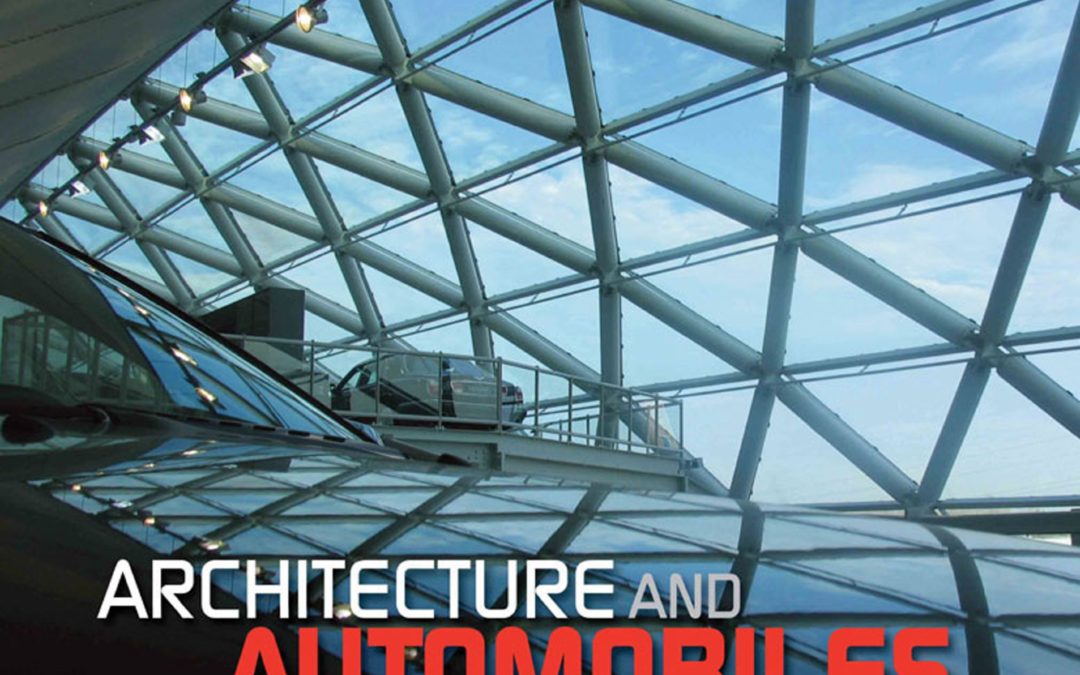
Architecture and automobiles have been intrinsically linked since the dawn of the internal combustion engine, from the assembly plant to the showroom and on to that ubiquitous fixture of the artificial landscape, the service station. The streamlined forms of automobiles have often inspired architects and some have even ventured into designing their own cars.
This book features Foster and Partners, Bohlin Cywinski Jackson, ONL, Renzo Piano, Populous, Zaha Hadid, UNStudio and Massimiliano Fuksas, and presents their best projects, including the BMW Museum in Munich, the Porsche Museum in Stuttgart, the Audi museum in Ingolstadt by 24-H, Manuel Gautrand’s Citroen museum on the Champs Elyssee in Paris, and the Regio Emilia bridge by Santiago Calatrava in Italy.
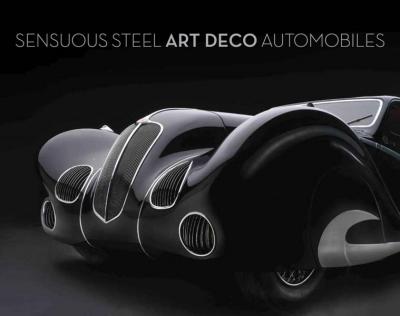
CURRENTLY SOLD OUT – AWAITING PUBLISHER RE=PRINT
This book was published to accompany an exhibit of Art Deco-styled cars shown at the Frist Center for the Visual Arts in Nashville, Tennessee, from June 14 through September 15, 2013. All 20+ cars and motorcycles that were selected for the exhibit are presented here through the studio photography of Peter Harholdt and printed to the highest standard on extra-heavy paper stock.
Exhibition curator Ken Gross, along with fellow automotive historians Richard Adatto and Jonathan A. Stein, provide historical information about these unique cars, and art and architecture expert Thomas Mellins adds a fascinating essay about the emergence of Art Deco as a recognized style of expression. Includes:
Frank Lloyd Wright’s Cord L-29 Cabriolet
Two Figoni and Falaschi-bodied Delahayes
Jordan Model Z Speedway Ace
Pierce-Arrow Silver Arrow
Edsel Ford’s Model 40 Speedster
Voisin Type C27 Aerosport Coupe
Stout Scarab
Indian and Henderson motorcycles
Chrysler Airflow and Thunderbolt concept
Talbot-Lago T-150-C-SS Teardrop Coupe
The Bugatti Type 57C formerly owned by the shah of Iran, and many more
Hardcover | 12 x 9.5 | 112 pages

The venerable Chevy big-block engines have proven themselves for more than half a century as the power plant of choice for incredible performance on the street and strip. They were innovators and dominators of the muscle car wars of the 1960s and featured a versatile design architecture that made them perfect for both cars and trucks alike. Throughout their impressive production run, the Chevy big-block engines underwent many generations of updates and improvements. Understanding which parts are compatible and work best for your specific project is fundamental to a successful and satisfying Chevy big-block engine build.
In Chevy Big-Block Engine Parts Interchange, hundreds of factory part numbers, RPOs, and detailed color photos covering all generations of the Chevy big-block engine are included. Every component is detailed, from crankshafts and rods to cylinder heads and intakes. You’ll learn what works, what doesn’t, and how to swap components among different engine displacements and generations. This handy and informative reference manual helps you to create entirely unique Chevy big-block engines with strokes, bores, and power outputs never seen in factory configurations. Also included is real-world expert guidance on aftermarket performance parts and even turnkey crate motors. It s a comprehensive guide for your period-correct restoration or performance build.
John Baechtel brings his accumulated knowledge and experience of more than 34 years of high-performance engine and vehicle testing to this book. He details Chevy big-block engines and their various components like never before with definitive answers to tough interchange questions and clear instructions for tracking down rare parts. You will constantly reference Chevy Big-Block Parts Interchange on excursions to scrap yards and swap meets, and certainly while building your own Chevy big-block engine.

Architect John Parkinson died in 1935, and the Los Angeles Times praised him: “Future generations have only to walk through the streets of Los Angeles to be reminded how much John Parkinson in his lifetime contributed to the city that grew up under his hand.” In Iconic Vision: John Parkinson, Architect of Los Angeles, author Stephen Gee proves that this singular visionary created the look of America’s most dynamic metropolis, long before the world recognized the city’s importance. Consider that among more than four hundred buildings in the City of Angels that carried his architectural imprimatur, John Parkinson designed:
- Los Angeles City Hall, the most iconic building in California, the tower that changed a futuristic city’s skyline forever;
- Bullock’s Wilshire, the towering structure that rivals the Chrysler Building as America’s premier Art Deco edifice;
- Los Angeles Memorial Coliseum, the world’s only modern stadium to host two Olympic Games, 1932 and 1984–and still home to the USC Trojans;
- Los Angeles Union Station, the Mission-Moderne-Art Deco masterpiece that brought together California’s railroads and became a legend before the first trains roared in.
Iconic Vision, the first biography of the master architect, documents–in remarkable detail and images–Parkinson’s monumental contributions to the city he loved. Although other architects’ names have become synonymous with the city, John Parkinson designed more landmark buildings in Los Angeles than any other architect, living or dead. And, while other architects may have taken credit for Parkinson’s designs, Stephen Gee’s penetrating biography establishes the truth. He tells the story of a man who envisioned tomorrow.
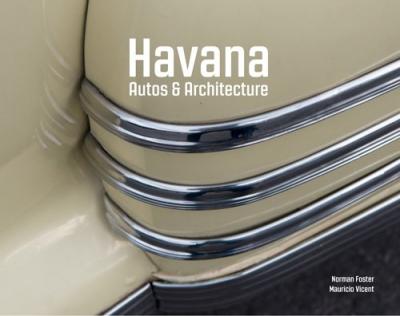
Norman Foster’s visits to Havana over the past ten years have enabled him to meet a variety of Cuban artists and architects. Inspired by his travels, Havana. Autos and Architecture features historic and current photographs that allow the reader to marvel over Cuba’s love affair with classic cars. In it, Mauricio Vicent guides us through Cuba’s tumultuous history, seamlessly blending its automobiles and architecture through the stories of different Havana locals.

- The ultimate insider’s guide to Los Angeles; features interesting and unusual places not found in traditional travel guides
- Part of the international 111 Places/Shops series with over 650 titles and 3.8 million copies in print worldwide
- Appeals to both the local market (nearly 10 million call Los Angeles home) and the tourist market (over 42 million people visit Los Angeles every year)
- Fully illustrated with 111 full-page color photographs
- A revised and updated edition
“In Los Angeles, everyone is a star.” – Denzel Washington
For more than a century, seekers of sun and celebrity from around the world have flocked to this sprawling metropolis on the Pacific, which Dorothy Parker once described as “72 suburbs in search of a city.” But beyond the red-carpet reputation and Tinseltown trappings is a west coast wonderland teeming with unexpected cultural experiences, iconic architecture, gorgeous open spaces, quirky museums, hidden vistas, unconventional art, and obscure stories about the starlets, moguls, personalities, and players who have made Los Angeles their playground. This unusual guidebook explores 111 of the city’s most interesting and unknown places and experiences: wander a serpentine path in a spiritual quest of your own making; channel your inner cowboy at a tried and true honky tonk bar; pay homage to the Dude at the bungalow where the big Lebowski lived; turn your car tires into musical instruments on the country’s only ‘musical’ road; sleep with the ghosts of Marilyn Monroe and Charlie Chaplin; view a constellation of stars more vivid than anything Hollywood has to offer. From the San Gabriel Mountains to the Pacific Ocean, Angelenos and visitors will fall in love with the real Los Angeles. Adventures beckon. Surprises await. Just imagine how much more scintillating your dinner-party storytelling will be
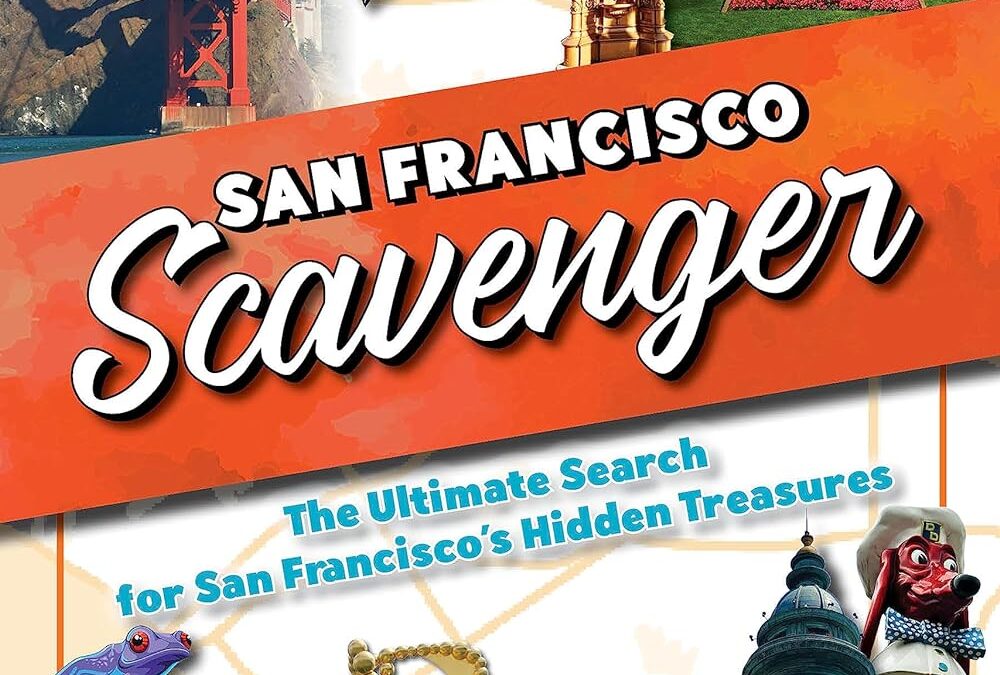
San Francisco lures people in search of a wide variety of treasure: fame, wealth, property, inspiration, love, family, community, freedom, and a fresh start. With this book in your hands, you hold a treasure map to the history of the City by the Bay―from its earliest days to more modern times. Solve 360 rhyming clues that take you on a scavenger hunt through 19 different neighborhoods across the 49 square miles of San Francisco. Each riddle includes a photo to help you find museums, public artworks, historical sites, bars and restaurants, architectural highlights, and more. Whether you love the thrill of solving a puzzle, have a desire to learn a little history, feel the urge to get out and explore, or even rediscover a city you thought you knew, find the true spirit of San Francisco in the pages of this book. Author and travel journalist Jill K. Robinson left her heart in San Francisco in her earliest childhood years. She brings her years of research, love for the city, and countless hours of exploring to this epic scavenger quest. Come with an adventurous spirit, and whether you solve the clues alone or with family and friends, this creative excursion will help you unlock the secrets of San Francisco.
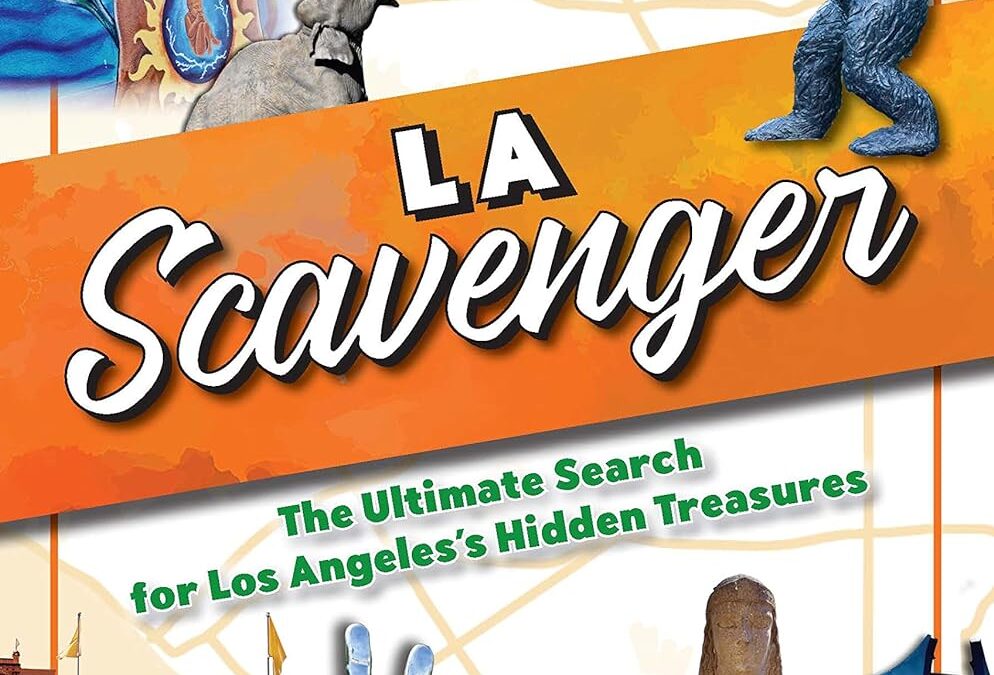
They say nobody walks in LA, but with LA Scavenger in hand you’ll ditch the car and discover Los Angeles’s hidden treasures that you’d otherwise zip past. This fun and interactive scavenger hunt will help you see the city in a completely new way as you walk or roll to locate under-the-radar and iconic landmarks. Set off on an exciting journey to uncover over 300 locations in neighborhoods all over LA and neighboring cities. You’ll use photos and rhyming clues to find eclectic public art, unique architecture, iconic restaurants, and other often-overlooked sights. Explore secret gardens, hidden staircases, and historic cemeteries where LA’s famous and forgotten names are buried. Find a charming shop that’s been making mochi for over 100 years and a Jewish deli full of rock history and pastrami. You’ll also visit a storied hotel that hosted the first Academy Awards ceremony, a Victorian mansion that became a clubhouse for magicians, and an Art Deco sculpture that guards a lake. Even if you’re familiar with some of the locations, the poetic clues will reveal fascinating trivia and give you a fresh perspective on the neighborhood. Food and travel writer Danny Jensen brings his love for Los Angeles and enthusiasm for exploring hidden histories and secret places to this unique guidebook. With this one-of-a-kind scavenger hunt, you can team up with your family, challenge your friends, or solve the clues on your own to test your knowledge of the city. Perfect for both visitors and longtime Angelenos, LA Scavenger will help you explore new neighborhoods, look at familiar locations in new ways, and train your eye to find the tiny details that tell a larger story. Enjoy the adventure!
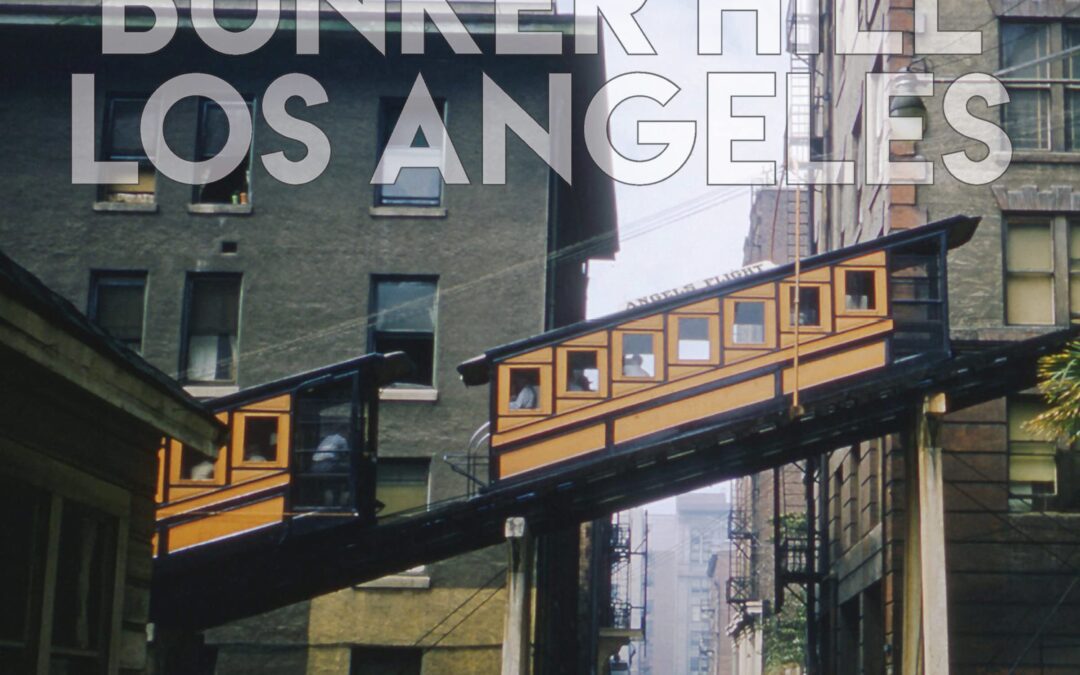
Bunker Hill is the highest point of downtown Los Angeles, both literally and figuratively. Its circle of life has created a continuous saga of change, each chapter rich with captivating characters, structures, and culture. In Bunker Hill Los Angeles: Essence of Sunshine and Noir, historian Nathan Marsak tells the story of the Hill, from the district’s inception in the mid-19th century to its present day. Once home to wealthy Angelenos living in LA’s “first suburb,” then the epicenter of the city’s shifting demographics and the shadow and vice of an urban underbelly, Bunker Hill survived its attempted erasure and burgeoned as a hub of arts, politics, business, and tourism.
As compelling as the story of the destruction of Bunker Hill is―with all the good intentions and bad results endemic to city politics―it was its people who made the Hill at once desirable and undesirable. Marsak commemorates the poets and writers, artists and activists, little guys and big guys, and of course, the many architects who built and rebuilt the community on the Hill―time after historic time.
Any fan of American architecture will treasure Marsak’s analysis of buildings that have crowned the Hill: the exuberance of Victorian shingle and spindlework, from Mission to Modern, from Queen Anne to Frank Gehry, Bunker Hill has been home to it all, the ever-changing built environment.
With more than 250 photographs―many in color―as well as maps and vintage ephemera to tell his dramatic visual story, Marsak lures us into Bunker Hill Los Angeles and shares its lost world, then guides us to its new one.
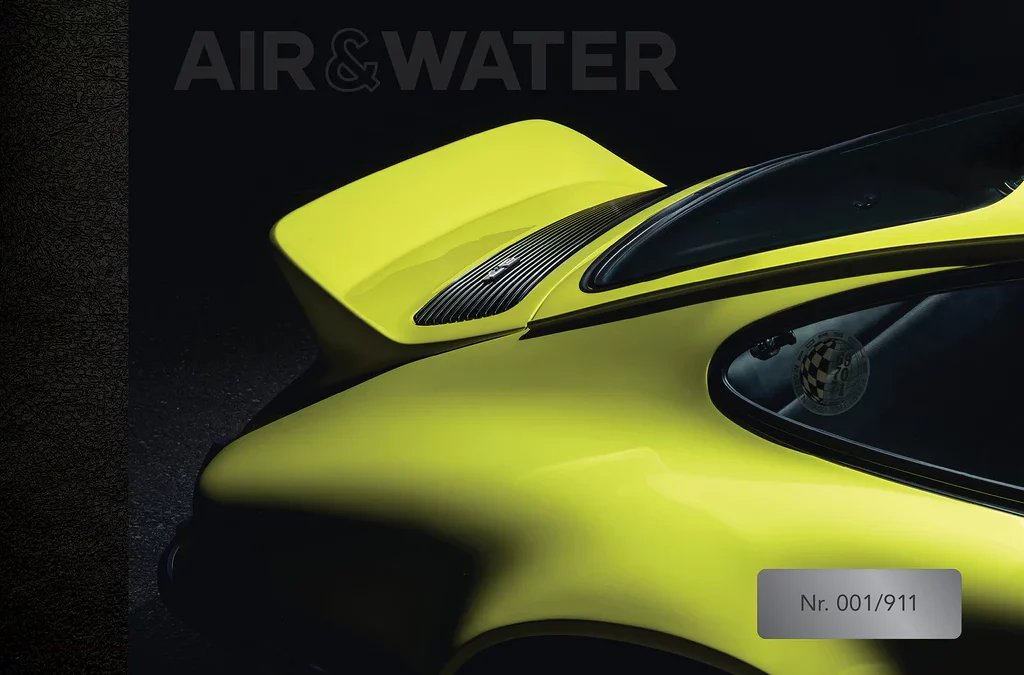
Discover some of the rarest and most desirable Porsche sports cars ever produced!
Throughout the history of the sports car, no marque has epitomized the excitement and passion of driving like Porsche. The Saratoga Automobile Museum, in collaboration with architect Steven Harris, presents 22 of the marque’s rarest air and water-cooled cars.
This remarkable collection highlights the manufacturer’s past seven decades of production — from 356 Carreras and Speedsters to high-performance RS 911s — all captured in sensational detail by renowned photographer James Lipman.
- Showcases 22 of the rarest and most desirable Porsche sports cars, from the 1956 Carrera GT to the 2019 991.2 GT2RS, as well as several custom builds
- More than 240 stunning images including exterior, interior, and engine-bay details by Car and Driver, Motor Trend, and Top Gear photographer James Lipman.
- Includes driving impressions from automotive journalists Jethro Bovingdon of Top Gear, Dickie Meaden of evo magazine, and Intercooler cofounder Andrew Frankel
The stunning imagery is accompanied by specifications and history as well as driving impressions from leading automotive writers Richard Meaden, John Simister and others. Air & Water combines breathtaking imagery and words to transport the reader on a thrilling journey of being behind the wheel of these ultra-rare machines.
The 911 Edition is a special version of Air & Water for collectors, limited to just 911 individually numbered units. It features a unique cover with individually numbered metal plates, an art print of an image from the book, and an exclusive cloth-wrapped clamshell case. Each copy of the 911 Edition is protected by a custom-made individual mailing carton.
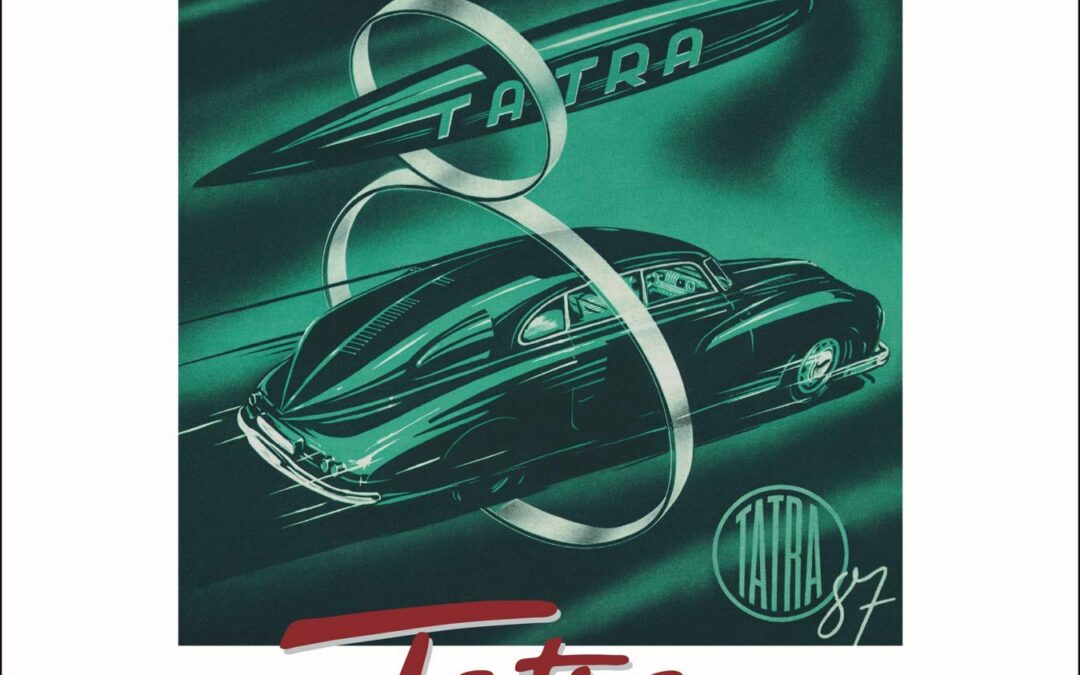
Tatra – The Legacy of Hans Ledwinka is the story of the Tatra company, which originated in the Central European country of Czechoslovakia. It is a tale of great innovation and avant-garde design in automobile engineering. It is also the story of one man – Hans Ledwinka – and his visionary concepts which have become highly influential, although often undervalued, contributions to the development of car technology.
Until now, Hans Ledwinka’s talent has hardly been recognised; in retrospect, he can be judged equal to car designers such as Benz, Daimler and Porsche, whose endeavours have been fully recorded many times over. With his revolutionary Tatra cars, Ledwinka consistently pushed back the frontiers of automobile construction, and it’s certain that without his inspiration, the Volkswagen in its air-cooled rear-engined form would perhaps never have been conceived. This book suggests that Ledwinka played a greater part in this development than has previously been appreciated.
The authors have covered the full history of the Tatra company, which is one of the oldest factories in continuous automobile manufacture, dating back to the 19th century. By doing this, they have placed both Ledwinka and the Czechoslovak Tatra company in their rightful place in the history of car design, and provided a fully comprehensive assessment of the influence of Tatra car designs and their inspired creator.
The text of this larger format 2nd edition has been fully revised and updated since the 1990 edition. This new edition also contains many additional illustrations. The book also has a new foreword, written by Norman Foster, the British architect, and proud owner of a Tatra T87, who pays tribute to the aesthetic qualities of this design classic and captures the fascination of both designers and motor historians with the development of Tatra.

The Key 2021 is both a book and a valuable document. A book because it presents in-depth and compelling stories such as the parallel between the evolution of the automobile over the last 100 years and that of architecture, art, fashion and music. Over 80 unique pages that tell a magnificent story. Then, the history of the Scuderia racing teams which, from an idea of Enzo Ferrari, have become the symbol of an authentic passion for racing. Also of great interest is the discovery of the new dimension of the Classic car experience, revived in a Club called “The eClassic Club”, where real cars are joined by exquisitely crafted simulators by Zagatoand Pininfarina. The past brought to the levels of today’s Formula 1. And much, much more, more besides.
From the pages of the book, 280 in all, we then move on to those of the document: here you’ll find in-depth studies on the various trends of the Classic car market based on the meticulous analysis of the results of global auctions, a very important survey on the opinion of young Europeans, Asians and Americans on the future of the car and on the importance of its past. Statistically representative results on just how very much alive and loved the object that gave humanity its freedom still is.
Finally, a unicum: the ranking of the world’s top 100 collectors. How could you not know it?
The Key 2021. Not to be missed.


